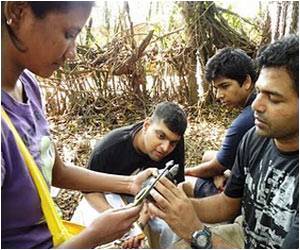
A winding stretch of lush greenery runs from the shadows of skyscrapers in the financial district to the border with Malaysia, all that’s left of an old railway taken over by Singapore from its neighbour in mid-2011.
Now popularly known as the "Green Corridor", the 25-kilometre (16-mile) zone runs from north to south like a spine and is the focus of a citizens’ campaign to create a sanctuary for nature -- and development-weary Singaporeans.
But whether or not the government can resist the urge to develop parts of the swathe of land is another matter.
Liew Kai Khiun, an academic involved in heritage work, said the future of the railway land has become an important issue for many Singaporeans.
"Other than merely nostalgia, these concerns actually reflect the undercurrent desires by more Singaporeans for more stability, ownership and continuity in a country that they would like to call home instead of an exploitable asset," he said.
Advertisement
Malaysia and Singapore separated in 1965 but the railroad, built earlier in the century during British colonial rule, remained in Malaysian hands for 46 years as the two countries sorted out a raft of issues.
Advertisement
The former main terminal in downtown Singapore, an art deco structure erected in the 1930s and sitting on prime land, is to be preserved as a national monument.
Train services from Singapore to Kuala Lumpur now run from a modern terminal at the border area.
Avid nature and heritage groups are now calling for the rest of the railway land inside Singapore to be converted into recreational spaces and nature reserves instead of more shopping malls, apartments and industrial zones.
"This area is very rich in terms of flora and fauna, especially bird life, there are easily about a hundred species," said Leong.
Property analysts said it would be difficult to put a commercial value to the railway land, which runs through some of the priciest real estate in Singapore, until official policy is made clear.
All but two kilometers of the former railway are currently open to the public, a preserved rural zone welcomed by city dwellers.
Singapore is one of the world’s most densely populated countries, with 7,257 people per square kilometre (18,796 per square mile).
"It becomes a countryside, a backyard to all these residents. There is a mix of wild vegetation and informal community gardening by the residents, which is very pleasant," the Nature Society’s Leong said of the old rail line.
Together with allies like architects and cycling groups, Leong proposed the preservation of the corridor to the government in October 2010 when the handover of the railway land was already a certainty.
Leong likened it to New York’s High Line project, saying the movement to preserve the Green Corridor in Singapore was a "bottom-up" approach launched by citizens.
The High Line is a public park built on a historic freight rail line elevated above the streets on Manhattan’s West Side. It is owned by the City of New York but and maintained and operated by the community.
Singapore is noted for its tree-lined, manicured coastal highway from the airport to the city -- but Liew said military reservations and golf courses are counted as part of "green spaces" on the island.
The government tends to emphasise "manicured and sculptured green spaces rather than natural vegetation," Liew said.
Citizens’ calls for the preservation of the Green Corridor through social media, later amplified in the traditional media, have had an impact on public policy, but the government refuses to rule out future development.
"We will study the proposal of maintaining a continuous green link along the rail corridor while balancing the need to safeguard the development potential of the lands," the Urban Redevelopment Authority (URA) told AFP.
The URA, Singapore’s land-use planning agency, has launched a competition with cash prizes for the best ideas on what to do with the land in the long term.
Ian Krempl, a 23-year-old Singaporean park ranger, is relieved he no longer has to watch out for trains when he goes cycling in the corridor and hopes the land will not be redeveloped like the rest of the island.
"Everywhere in Singapore is paved already. We should keep the heritage," he said.
Source-AFP









